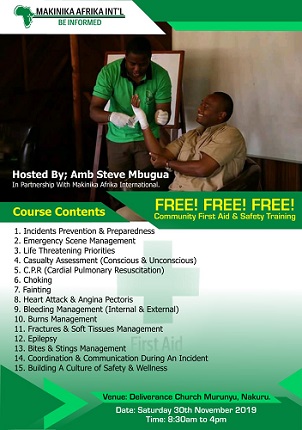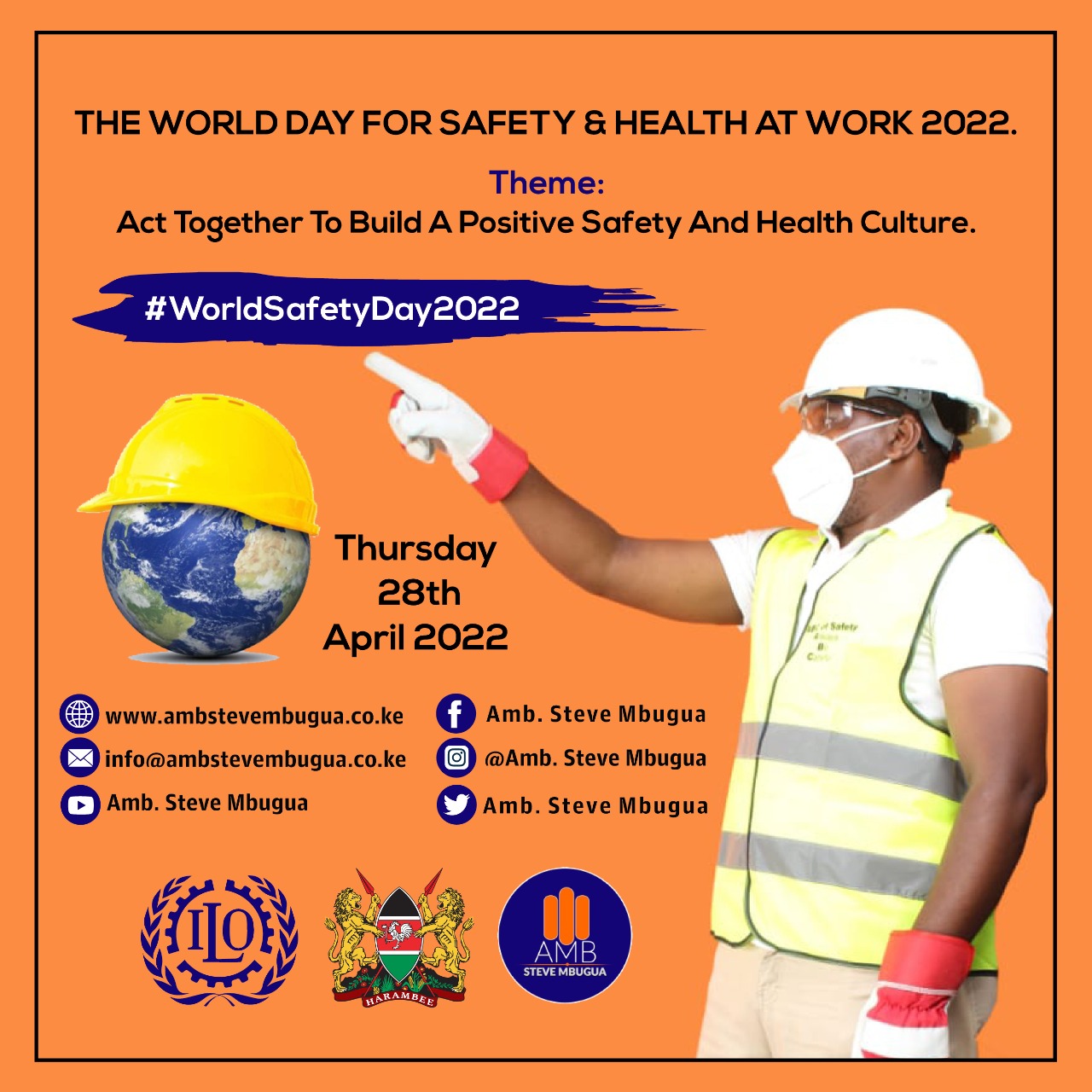Transport safety is essential for the secure movement of people and goods, playing a critical role in our daily lives and the global economy. As Ambassador Steve Mbugua, the globally recognized Ambassador of Safety, I am dedicated to advancing transport safety standards and practices. In this article, we explore key strategies for enhancing transport safety, including regular vehicle maintenance, comprehensive driver education, strict adherence to safety regulations, and the integration of advanced safety technologies. By prioritizing transport safety, we can significantly reduce accidents, protect lives, and ensure the reliability and efficiency of our transportation systems. Let’s explore the vital components of effective transport safety management and work collaboratively to create safer roads, railways, airways, and waterways for everyone.
Transport safety encompasses a broad spectrum of measures and protocols aimed at ensuring the safety and security of passengers, drivers, pedestrians, and goods during transportation activities. Here’s a detailed guide to transport safety:
Introduction to Transport Safety
Transport safety involves the planning, implementation, and enforcement of measures to prevent accidents, injuries, and fatalities across various modes of transportation, including road, rail, air, and maritime.
Different Accidents, Incidents, Illnesses, and Near Misses Relating to Transport Safety
1. Road Traffic Accidents: Collisions, crashes, and rollovers involving vehicles on roads.
2. Pedestrian Accidents: Incidents involving pedestrians being hit by vehicles or falling on walkways.
3. Railway Accidents: Derailments, collisions, or incidents involving trains and rail infrastructure.
4. Aviation Incidents: Aircraft crashes, emergency landings, or near misses in air travel.
5. Maritime Accidents: Ship collisions, groundings, or incidents involving vessels at sea.
6. Public Transport Incidents: Accidents on buses, trains, trams, and other public transportation.
7. Cargo Handling Accidents: Mishaps during loading, unloading, or transport of goods.
8. Industrial Vehicle Accidents: Forklift accidents, crane failures, or mishandling of heavy equipment.
9. Cycling Accidents: Collisions involving bicycles, motorcycles, or scooters on roads.
10. Waterway Accidents: Boating accidents, capsizing, or drowning incidents.
11. Air Quality Issues: Health impacts due to vehicle emissions or industrial pollutants.
12. Driver Fatigue or Distraction: Accidents caused by tiredness, distraction, or impaired driving.
Latest Trends in Transport Safety
1. Advanced Driver Assistance Systems (ADAS): Integration of technologies like lane departure warning, adaptive cruise control, and automatic emergency braking in vehicles.
2. Electric and Autonomous Vehicles: Safety considerations for electric cars and autonomous driving technologies.
3. Transportation Network Companies (TNCs): Safety regulations for ride-sharing services like Uber and Lyft.
4. Smart Infrastructure: Use of sensors and smart technology in roads and transport hubs to monitor traffic flow and safety.
5. Cybersecurity in Transport: Protection against cyber threats targeting transportation systems and connected vehicles.
6. Environmental Impact: Measures to reduce carbon emissions and promote sustainable transport modes.
7. Emergency Response Integration: Coordination between transport providers and emergency services for rapid response to accidents.
8. Public Awareness Campaigns: Education on road safety, seat belt use, and pedestrian awareness.
9. Safety Certification for Vehicles: Testing and certification of vehicles for compliance with safety standards.
10. Transportation of Hazardous Materials: Regulations and safety measures for transporting chemicals, gases, and other hazardous materials.
11. Global Standards and Harmonization: Efforts to align safety regulations internationally for consistent standards.
12. Data Analytics for Safety: Use of big data and analytics to predict and prevent transport accidents.
Transport Safety Audits and Inspections
1. Regular Safety Audits: Assessing compliance with safety regulations and identifying potential hazards.
2. Vehicle Inspections: Checking vehicles for mechanical faults, safety features, and compliance with emissions standards.
3. Infrastructure Inspections: Evaluating road conditions, signage, lighting, and other safety features.
4. Transportation Equipment Checks: Inspecting safety equipment such as seat belts, airbags, and emergency exits.
5. Emergency Response Drills: Conducting simulations to test the readiness of transport operators and emergency services.
6. Driver Proficiency Assessments: Evaluating driver skills, knowledge of safety regulations, and adherence to traffic laws.
Transport Safety Training and Education
1. Driver Training Programs: Teaching safe driving techniques, defensive driving, and handling emergency situations.
2. Public Safety Campaigns: Educating the public about road safety, seat belt use, and pedestrian awareness.
3. Crew and Staff Training: Training transport operators, crew members, and staff on safety protocols and emergency procedures.
4. Passenger Safety Briefings: Providing safety information to passengers on airplanes, trains, and ships.
5. Safety Certification Courses: Offering courses on transport safety for professionals in the industry.
6. Continuous Professional Development: Keeping transport personnel updated on the latest safety practices and regulations.
Installation of Safety Measures
1. Road Safety Infrastructure: Installing barriers, guardrails, and crash cushions to minimize the impact of accidents.
2. Safety Signage and Signals: Using clear signage, traffic lights, and road markings to guide drivers and pedestrians.
3. Emergency Response Equipment: Placing first aid kits, fire extinguishers, and emergency call boxes in transport hubs.
4. Vehicle Safety Features: Ensuring vehicles are equipped with airbags, anti-lock braking systems (ABS), and stability control.
5. Security Measures: Implementing surveillance cameras, alarms, and access control systems in transport facilities.
Compliance with Laws and Regulations
1. Traffic Laws: Adherence to speed limits, traffic signals, and rules of the road.
2. Vehicle Regulations: Compliance with vehicle safety standards, emissions controls, and registration requirements.
3. Workplace Safety Regulations: Ensuring transport operators and companies comply with occupational health and safety laws.
4. Environmental Regulations: Following regulations on emissions, noise pollution, and environmental impact assessments.
Transport safety is a critical aspect of modern society, influencing public health, economic development, and environmental sustainability. By implementing comprehensive safety measures, conducting regular audits, providing effective training, and adhering to regulations, transport operators can mitigate risks, improve efficiency, and enhance the safety and security of transportation systems for all stakeholders. Constant adaptation to emerging technologies and evolving risks is essential to ensure safe transport for current and future generations.
In conclusion, transport safety is a crucial aspect of maintaining secure and efficient transportation networks that prioritize the well-being of travelers and operators. As the Ambassador of Safety, I have emphasized the importance of vehicle maintenance, adherence to safety regulations, and the adoption of advanced safety technologies. By implementing these strategies, we can minimize transport-related risks, safeguard lives, and foster a culture of safety across all modes of transportation. Let us commit to championing transport safety and collaborate to build a future where safe and reliable transport is accessible to all. Embracing these practices not only enhances safety but also promotes trust and confidence in our transportation systems.
READ MORE
Road Safety Culture
Road Safety Training
Road Safety Video
Building A Culture Of safety
Home Safety



















